Game of Thrones Edinburgh
Edinburgh becomes the eighth kingdom.
- Client: Personal Project
- Brand: Pixel Theatre
Categories
Season 4 Game of Thrones Spoilers ahead
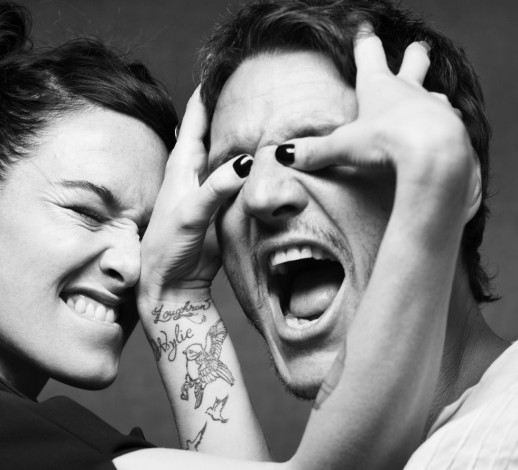
In 2014, Tyrion Lannister had just asked Oberyn Martell to fight in his second trial by combat, and we witnessed the Mountain gouge out the Vipers eyes and crush his skull! Riding high on those waves of shock and awe the HBO judder-naught Game of Thrones came to town.
Edinburgh had a visit from George RR Martin during The Edinburgh International Book Festival and some of the team behind the HBO series presented at The Edinburgh International Television Festival.
More significantly for me, I released a project I had been working on for 9 months called somewhat unimaginatively Game of Thrones Edinburgh.
I embarked on a journey to refine my 3D animation skills knowing that both challenge and excitement lay ahead in recreating the HBO shows intro, set this time in the Scottish capital. I've always thought the shows intro is really cool and slick, and I reckoned the production process behind it must of been a ton of fun. I love the simplicity in the chosen art direction and how through selective attention to detail and clever, easy to follow animation on a grand scale, a complex but palatable visual experience is achieved. Its a visual treat, and I wanted to try it out for myself.
So with such a large scale project, one which at its peak took a team of 25 at Elastic six months - how does someone go about it? Like any project of great magnitude, planning is key. Something we do a lot at Teviot is get a nice big piece of broon (brown) paper on the wall and start sticking Post-its to it and doodling all over the place.
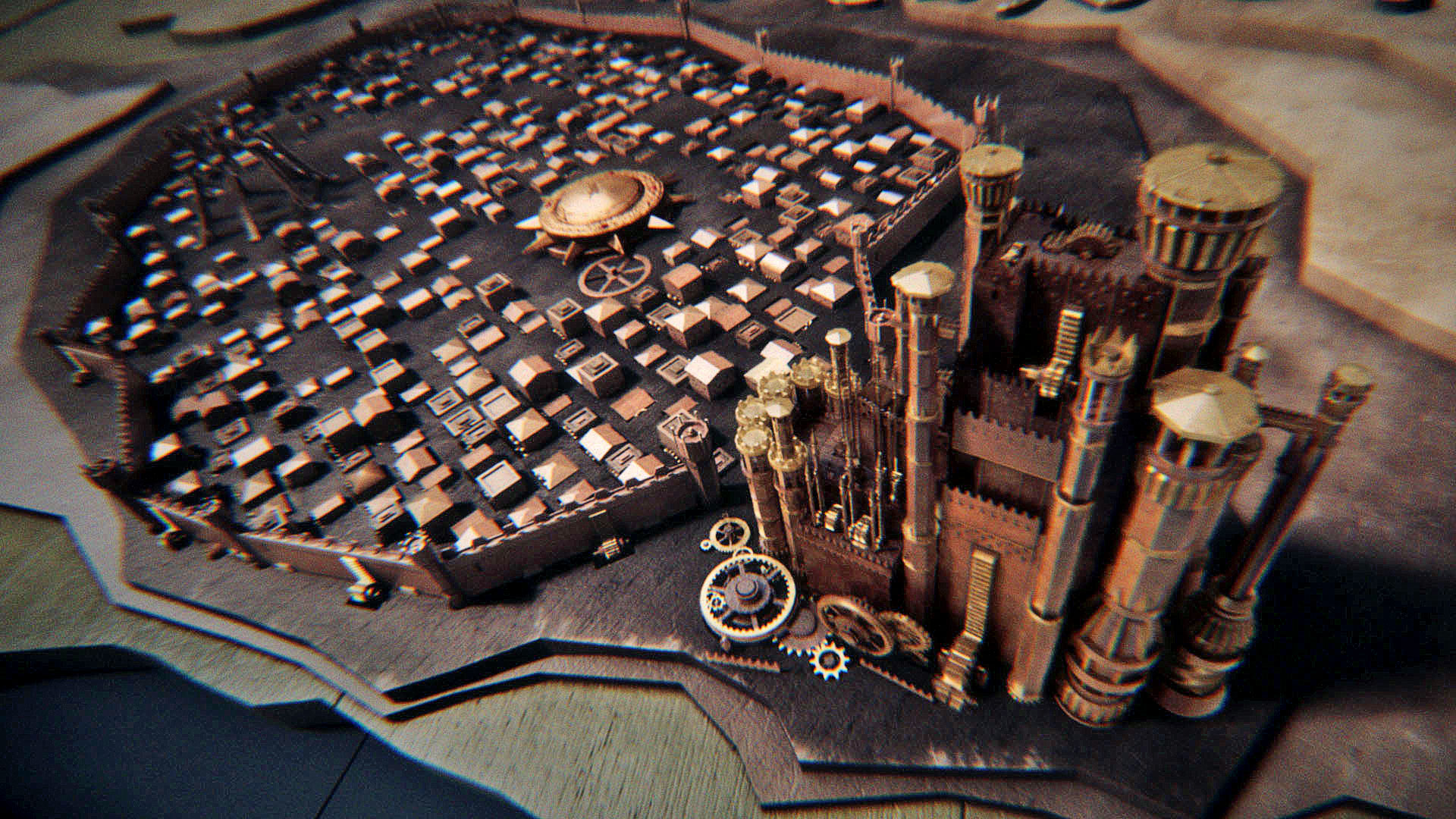
Best laid plans
I needed to get an understanding of everything required and a logical route to bring everything together. I explored the content requirements, the best methods for execution, looked at an overview of the main goals and determined the best release strategy and ideas for documenting the project. I researched the history of the main landmarks to determine whether it would be suitable to reveal buildings in chronological order. Quite some time was spent in planning before any production took place.
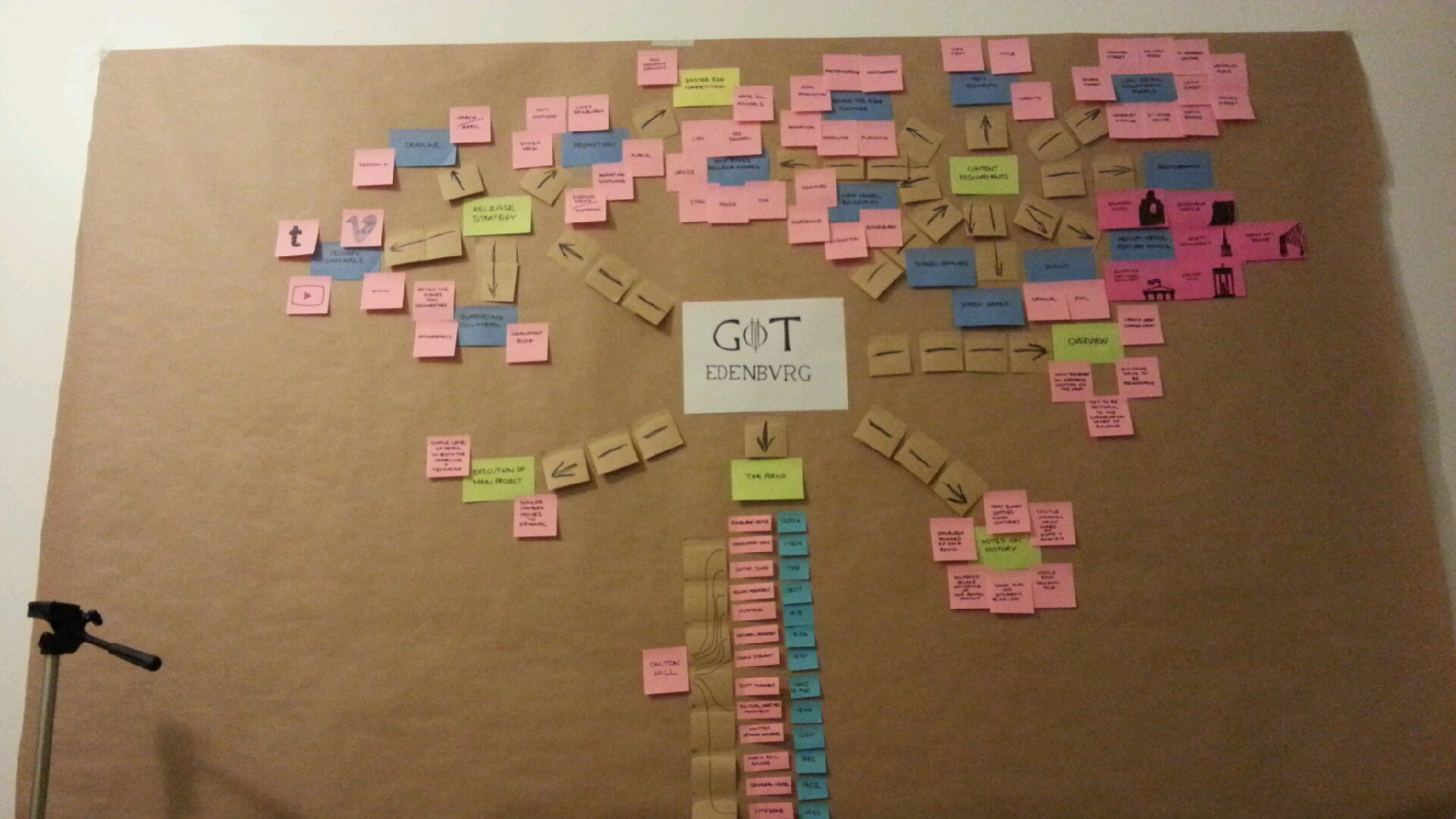
I wanted a feel for how long it would take to complete this project right at the beginning, because if it would take me 25 times longer than the six months the guys at Elastic took then it was a bust before it even started. Both the project plan and a proof of concept were pretty essential.
I have a few advantages over the original team however. For one the visual style was set, and I'm essentially matching up to the guide set out by HBO. Secondly, the buildings I was creating are real. Whilst I do need to represent them faithfully and convincingly, I don't need to conceptualise what Edinburgh Castle will look like or how the River Forth cuts through the landscape.
Why Edinburgh anyway? Its my home town, so of course its a place close to my heart. But Edinburgh also has the legacy of a typical city in the Game of Thrones setting, with a historic castle that has seen many bloody battles through the centuries and an old town which has areas that would fit right in on the next episode of the show. We've all see Braveheart right?! We've had hangings and occupation and power struggles for the throne and the lands. We've been there!
The six primary feature sites

I took around 500 photos of the city during this project to gather a rich source for referencing the topology and texture of each structure featured in the project. There was six feature sites and a great number of collateral structures and landscape surrounding them. Terrain maps were used to accurately model the plains of an area the size of The Isle of Man. Each feature site had a range of cog work and mechanical setup to give a sense of physical authenticity to their movement.
The proof of concept
For the proof of concept I chose the smallest feature site, the Scott Monument, and worked on 3D modelling it using Softimage. I spent quite some time determining what level of detail (LOD) to aim for, as I wanted to reflect the original building well, with enough detail to make it look convincingly like a real physical miniature model. However I wanted to avoid putting in so much detail that it would take me a long time to achieve the goal. Once I had found the balance on the LOD and finished creating the Scott Monument I planned how each individual component of the model would move and interact with the others to allow it to build up from the ground and stand tall as it does now. I experimented with using cogs, gears and the use of chains and pulleys. The idea was to create believable devices that would drive parts of the Scott Monuments movement.
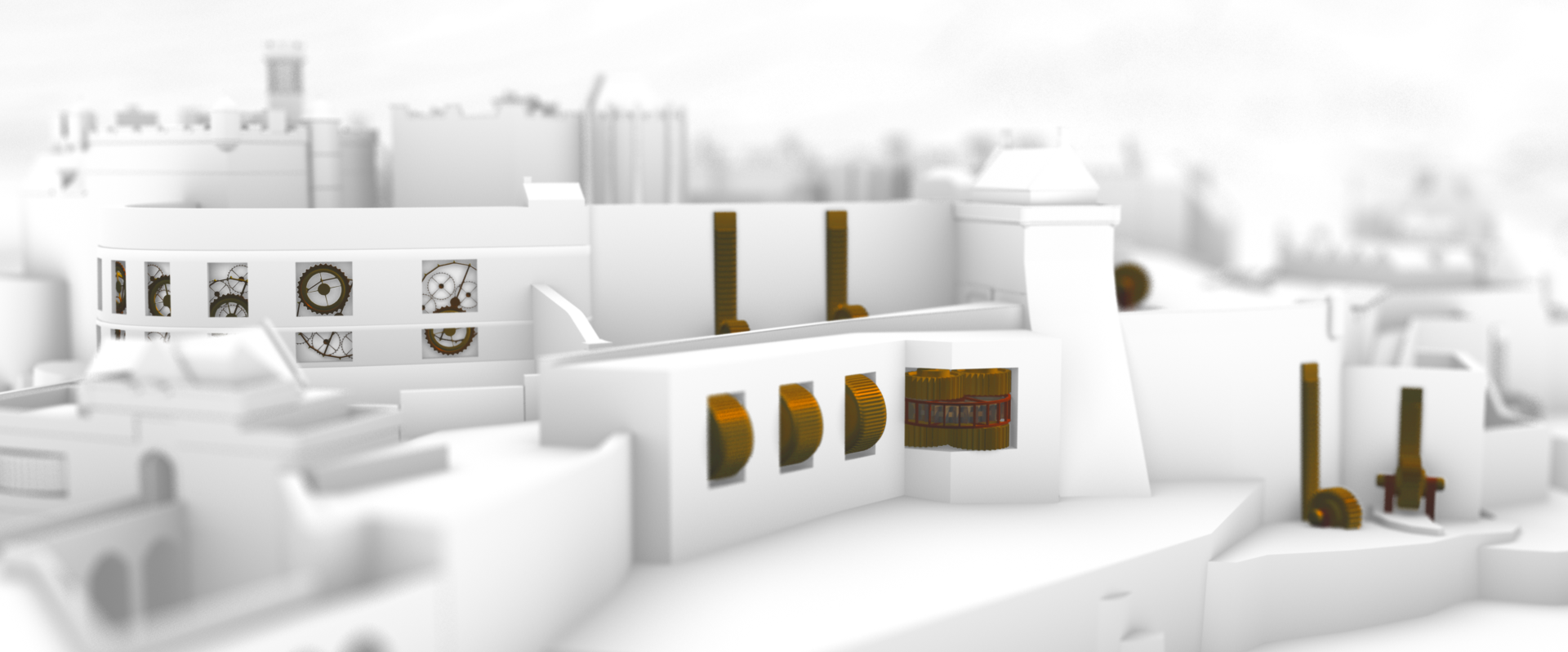
All that took place over a two week period. The learnings of the proof of concept were clear. With a certain level of detail and the use of a basic kit of mechanical elements, the buildings could be represented as convincing scale models that move.
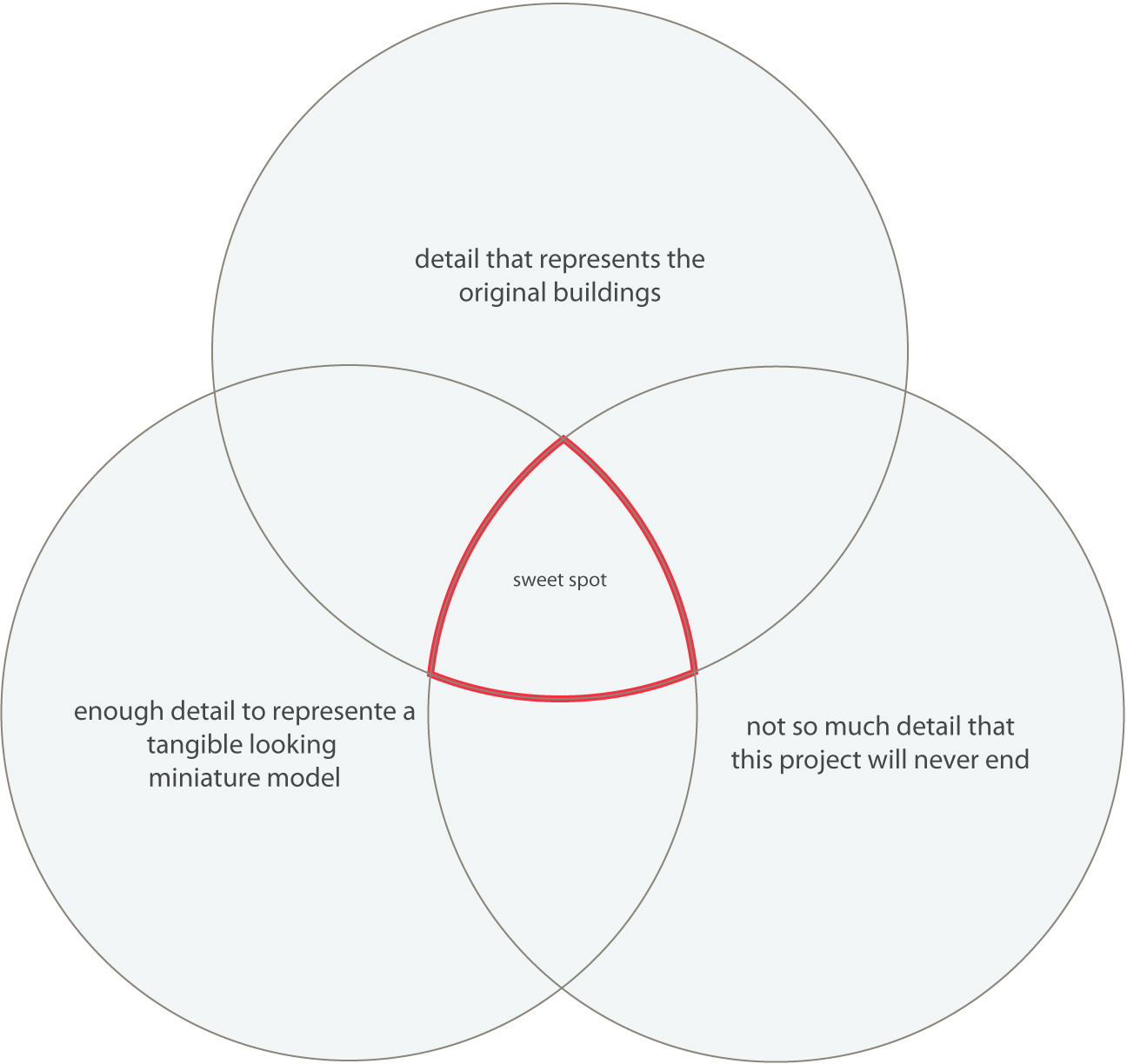
Full production goes ahead
I spent around four months modelling and rigging the six feature sites and surrounding buildings and landscape. Beginning with the map topology, I creating layers of the terrain following the main contours of the area of interest, adding in the peaks of the Pentland Hills, Arthurs Seat etc. The focus then shifted onto the man made stuff, modelling the small collateral buildings. I began in the east end of Princes street and working my way out to Calton Hill before then coming back and working my way towards the castle. Finally I worked on the feature buildings, which required more time and a higher LOD. It took a huge amount of time for all this - October 2013 through to February 2014 and only four months from the deadline! Many of the smaller structures are single elements but the larger structures were made up of individual sections that I set up in such a way to allow larger scale mechanical based animation.
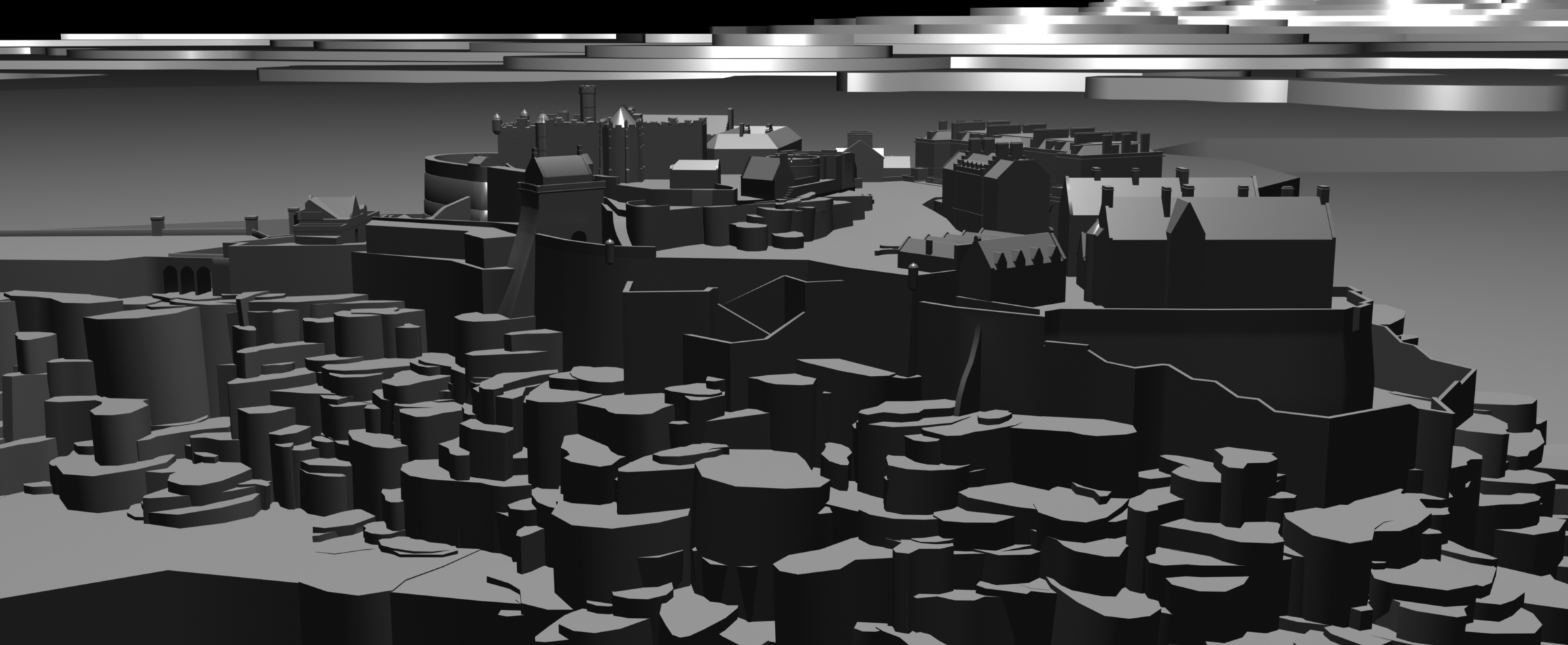
If you asked me what were the most difficult and ambitious feature sites that I worked on? I did struggled at times with some of them. I found it difficult to keep the detail level from getting too high on both the Balmoral and the Scottish National Galleries with what is really beautiful architecture. With Edinburgh Castle being so vast, the number of structures at odd angles or lined straight into the rock I found the modelling very tricky. Similarly, the Forth Bridge is so intricate that it took several long sessions with a fair bit of math involved to model and especially rig in such a way to achieve a good animation setup. It was all worth the effort though, the Forth Bridge is many peoples favourite part of the project.
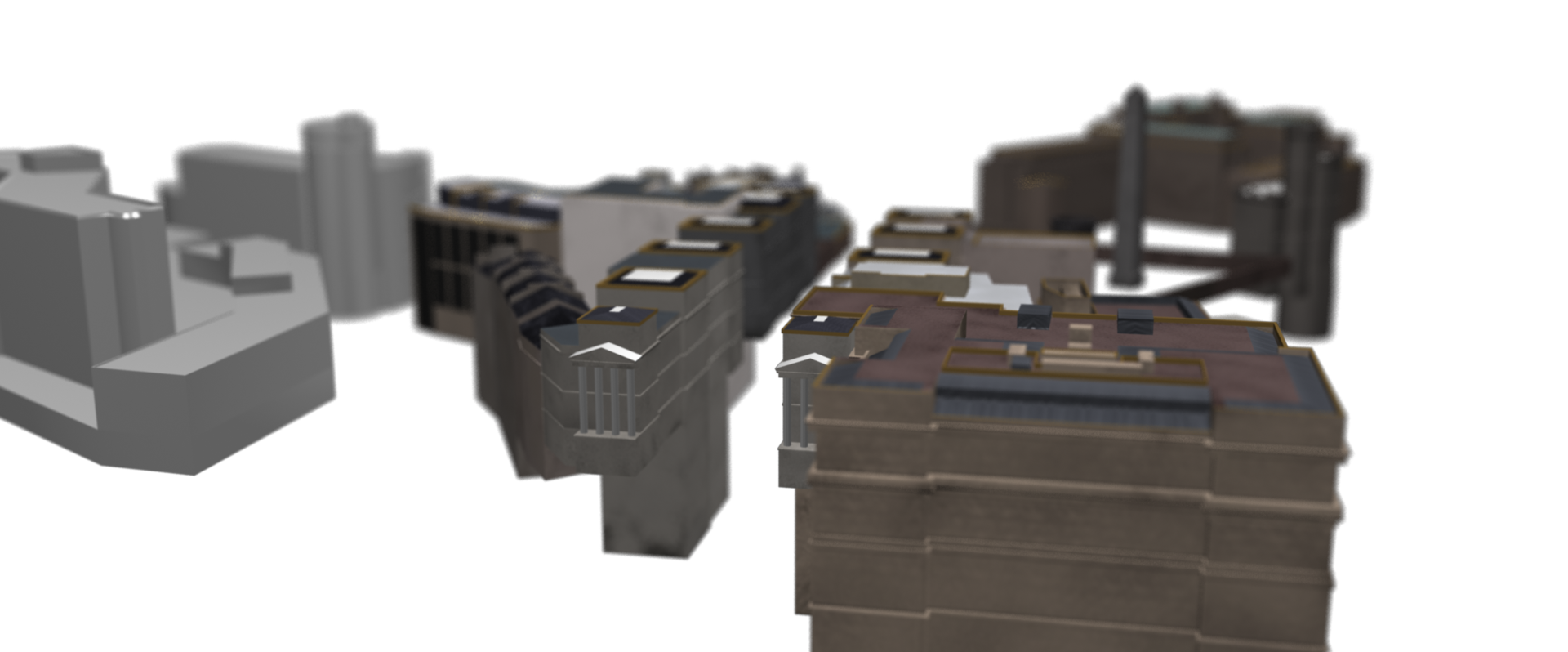
I spent the best part of another two months afterwards adding the colour and texture to everything using Mudbox. I added a metallic trim finish to all the buildings and mechanical workings to all the feature sites as it was such a prominent part of the established style of the HBO intro. The photography came in really handy when painting onto the models. The colours I used were referenced directly from the actual buildings in most cases. I used a variety of paint stencils to represent materials at scale on the models. The finish was of course intended to mimic that of the original. It was only by mid April when the series started airing that I began animating.
Animation is all about timing
To get my bearings with the overall timing of each feature site sequence, I animated the camera from start to finish. Knowing that the titles track lasts 1:30 from start to the crescendo I worked out how long I could afford to hang around at each landmark and the amount of time it would take for the camera to travel from point to point. That determined how much animation I could do on each feature. The order in which the camera visits the sites was locked down pretty quickly, and I worked sequentially animating the various parts at each site. There was enough time to get three different angles at each stop, so I could focus on particular details or nice compositions taking in the surroundings. Once I had framed each shot I animated the cog works and the nearby collateral buildings in shot. The idea was to create animations the eye could easily follow and have the small buildings as supplementary movement in the background. The overall feel is there is a lot going on, a lot rising up in every shot.
Working out how to animate the Forth Bridge was no easy task. Unlike every other structure this was a landmark made out of steel, and is just a mesh of beams and supports. I had to work out how all the sections could tuck away and compact into a smaller mass. The other challenge was that there has never been anything rising out of the water in the HBO intro. So this was new territory, I had to get creative working out the visual fx of the bridge rising out of the water.
As a nod to one of the worlds most famous steam locomotives I created a low detail version of the Flying Scotsman and worked on adding some smoke fx so that it could make a crossing on the Forth Bridge once it had unfolded into place. The smoke and water fxs turned out pretty well but did slow down the rendering when it came round.
A single render takes anything from a minute to 6-7 hours!
Rendering is the process where the computer produces the final image frame by frame applying the texture and colour to buildings, working out where light hits everything and where the shadows are cast. The computer also works out things like motion blur, how thick a plume of smoke is and how out of focus to make the background. Its a process that takes time, with a single frame taking anything from a minute to 6-7 hours! With a total of 2,148 frames the workload was high, and I spread it out over about 8 computers to get it all turned around in time for the deadline. Even with quite a few machines it did take about a month to render the whole animation in the background as I completed each shot!
The project timeline in graphical form
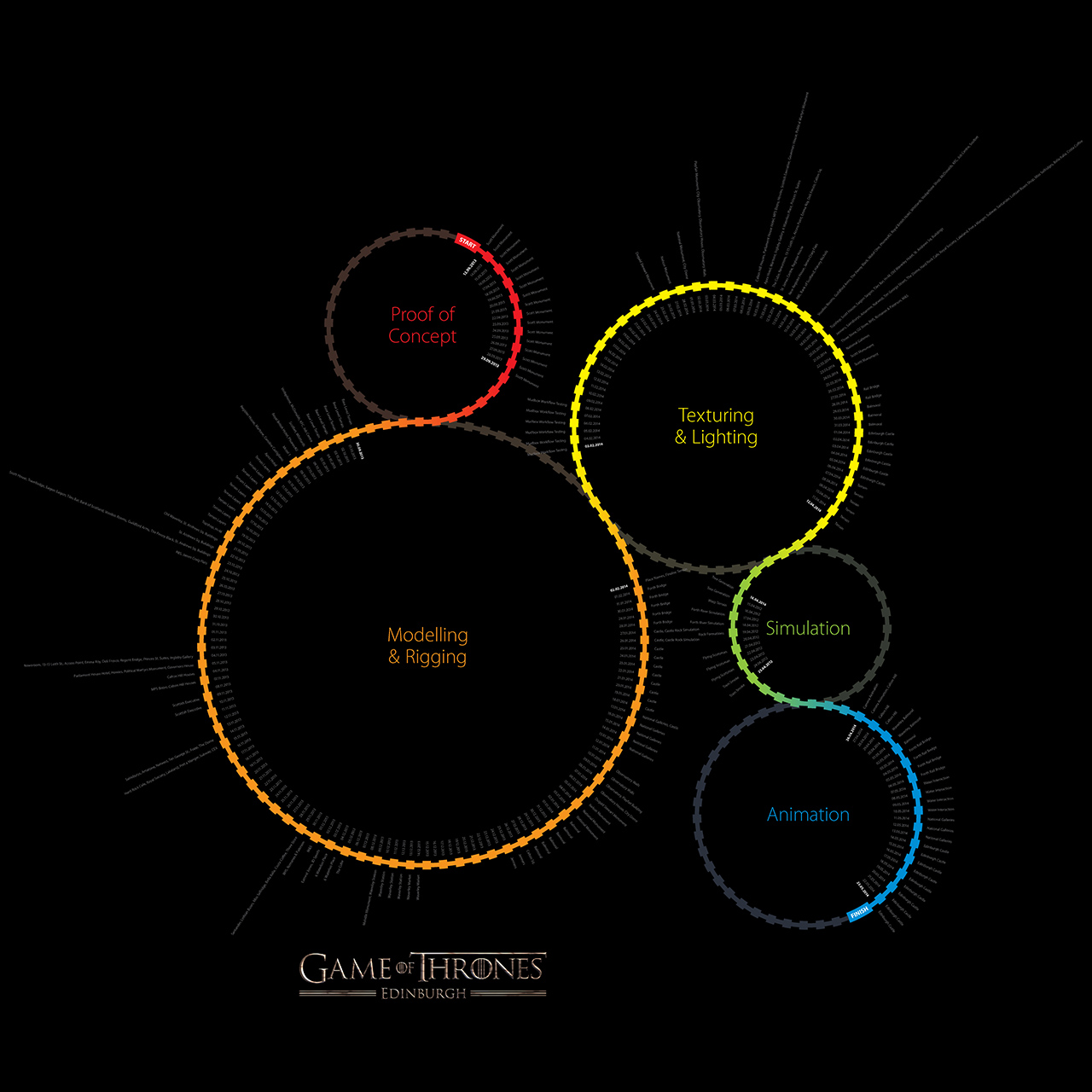
This gear timeline details how my time was spent on the project and gives an overview of how long each stage took. Each tooth in the cog represents a calendar day. The bigger the circle the more time that section took to complete. So at a glance you can see that the bulk of time was spent creating the digital assets for this project, with the orange section dealing with the construction of the assets and the yellow dealing with their look and finish. Once i had the assets, the rest of the project fell into place pretty quickly. The gear timeline can be viewed on the Tumblr Production Blog linked at the bottom of this article. Thanks to designer Cameron Wilson for his work on the timeline graphic!
Once I was reaching the finish line at the blue end of the chain, the release strategy kicked in. I built up some anticipation by opening the production blog to the public a few weeks before the release. I contacted local media outlets and got sneaky peaks circulating on social media. I arranged a private screening at the Dominion Cinema for family, friends and those who lent support and a bit of time to the project.
The following day, Friday the 13th(!) I had a larger audience come to the Cameo Cinema for the release launch. There I showed the 3 minute behind the scenes, gave a short presentation and then simultaneously screened the main animation as well as releasing it on YouTube. As it was Friday the 13th, of course something went wrong and the projector broke down just before the animation started! Thankfully the Cameo swiftly moved us to a (LARGER) screen and we all got to see the animation twice on the biggest screen the cinema has!
In the following days the project was mentioned by the likes of Ian Rankin and Irvine Welsh on Twitter, getting articles in national press, had a full page spread in the Edinburgh Evening News and featured as the Introduction to an interview with George RR Martin himself at the Edinburgh International Book Festival on the BBC!
In summary
The Game of Thrones finale has been and gone now. Love it or hate it, the show has been an epic tale of Ice and Fire and I feel that my project has taken me on a similarly epic journey. I couldn't be happier with the response from viewers near and far and feel I have produced a set piece I can feel proud of for many years to come!